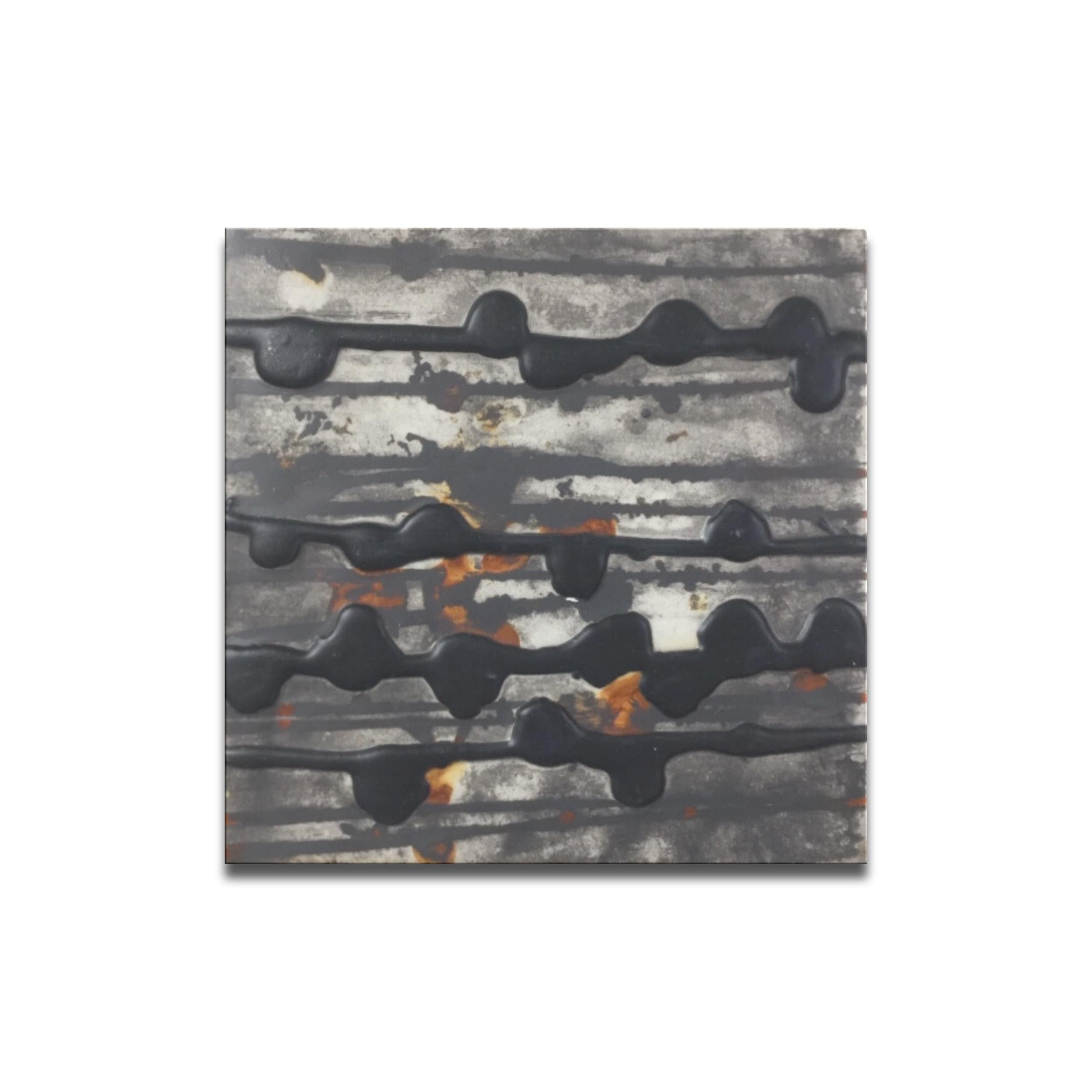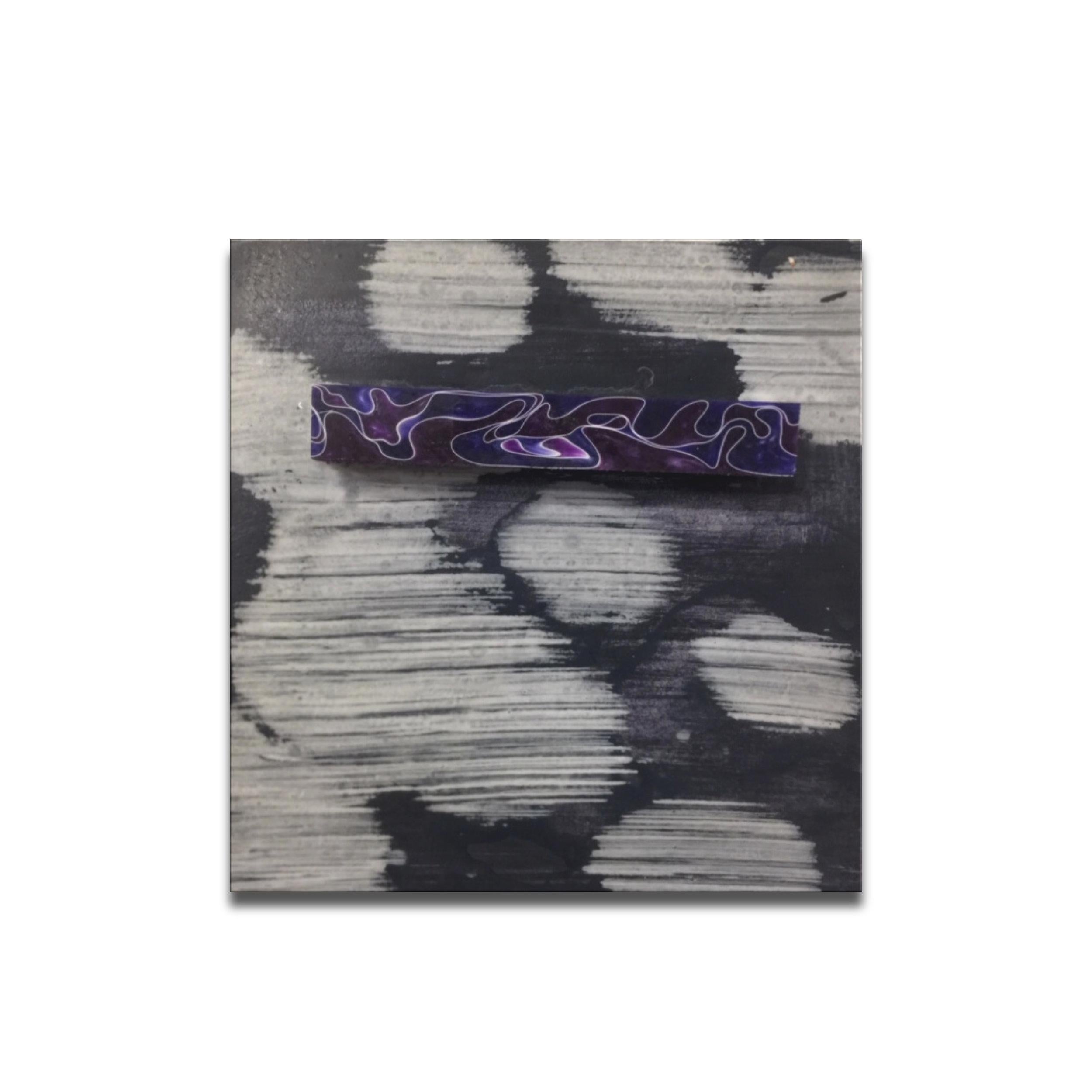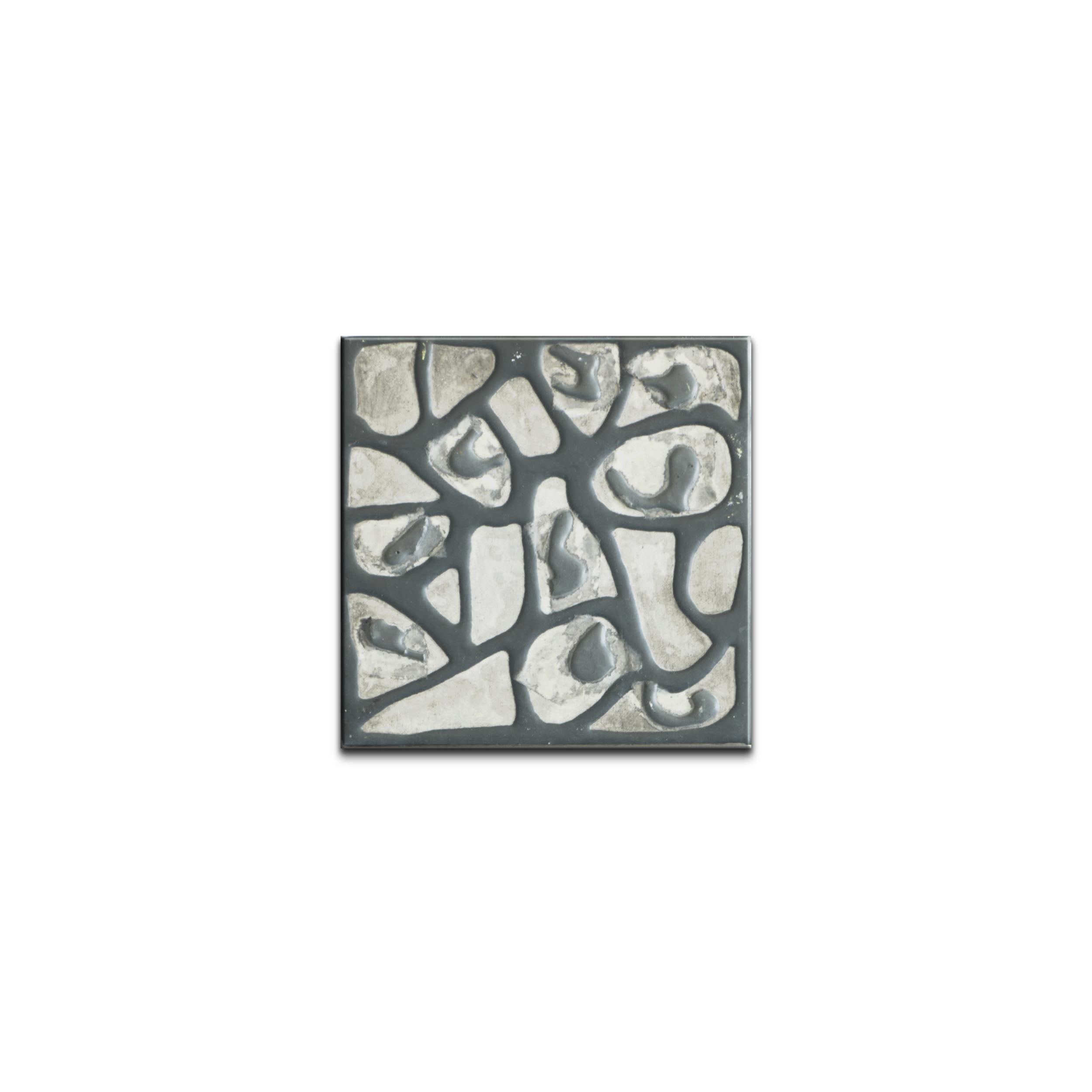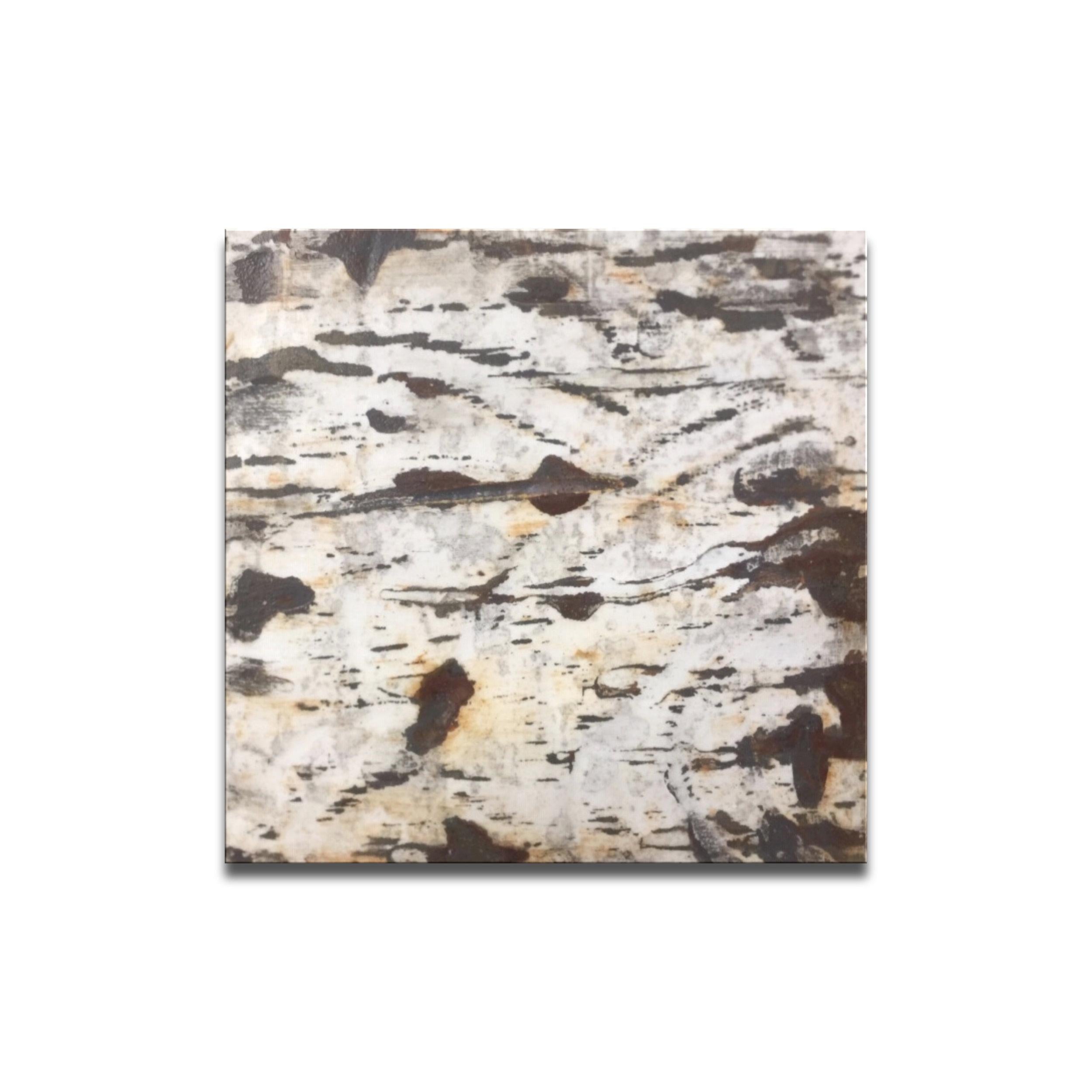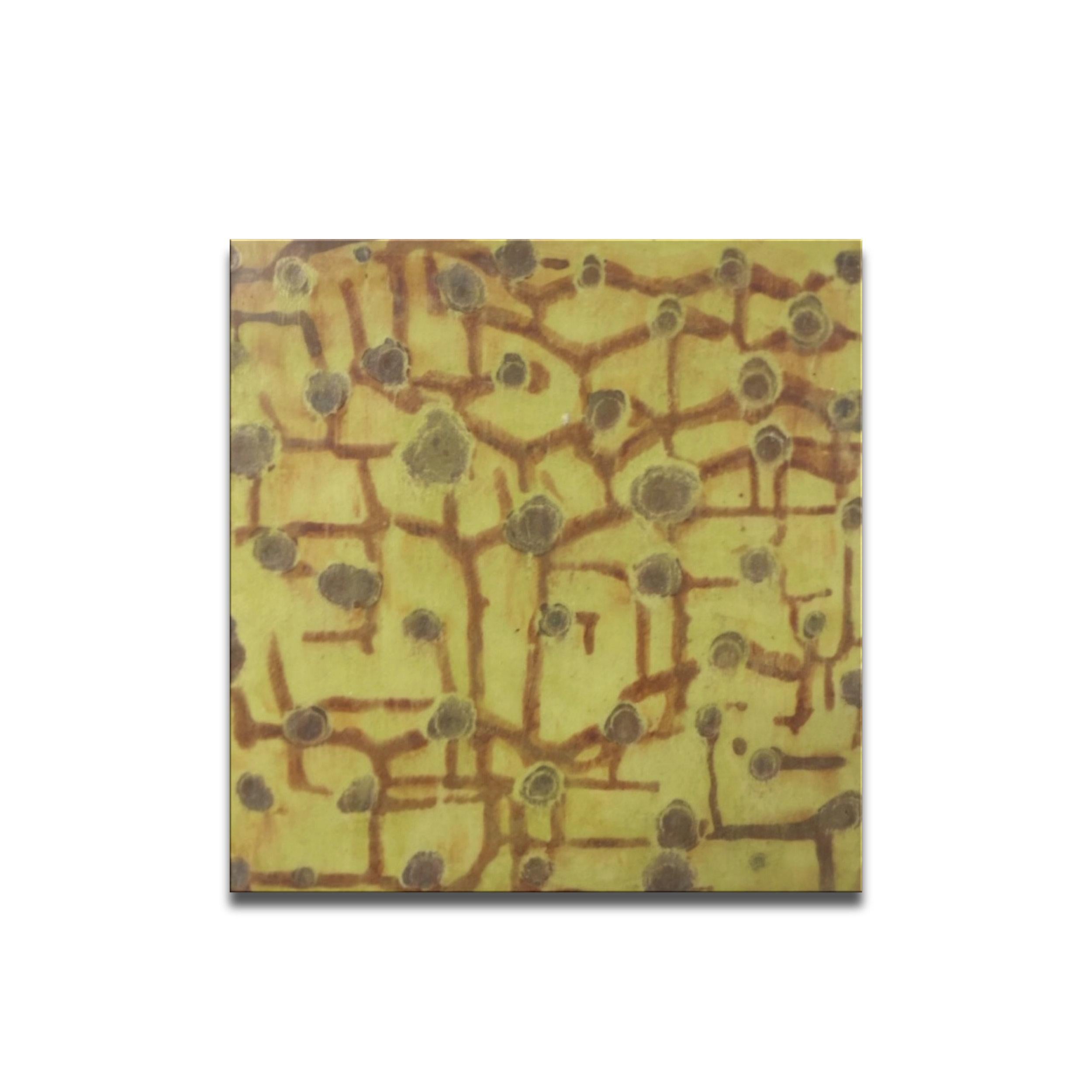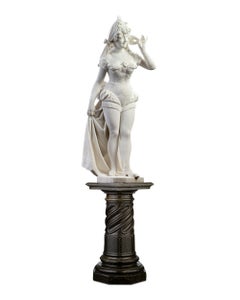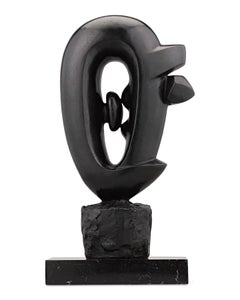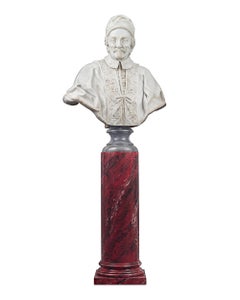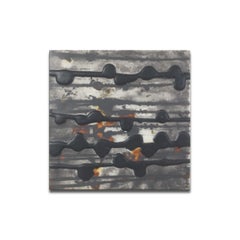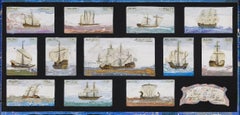
Scagliola on Slate of Mediterranean Warships
View Similar Items
Want more images or videos?
Request additional images or videos from the seller
1 of 7
UnknownScagliola on Slate of Mediterranean Warships1799
1799
About the Item
Dated "Livourne, 1799" 25 1/4" high x 45" wide x 2 1/2" deep
- Creation Year:1799
- Dimensions:Height: 25.25 in (64.14 cm)Width: 45 in (114.3 cm)Depth: 2.5 in (6.35 cm)
- Medium:
- Period:
- Condition:
- Gallery Location:New Orleans, LA
- Reference Number:Seller: 30-63121stDibs: LU1861922763
About the Seller
5.0
Vetted Seller
These experienced sellers undergo a comprehensive evaluation by our team of in-house experts.
Established in 1912
1stDibs seller since 2013
13 sales on 1stDibs
Typical response time: 3 hours
More From This SellerView All
- MasqueradeBy Fortunato GalliLocated in New Orleans, LAMasquerade, a traditional yet playful composition by Fortunato Galli, reflects the realism and intricacy that defined Italian sculpture at the end of the 19th century. Magnificently ...Category
19th Century Other Art Style Figurative Sculptures
MaterialsMarble
- La Pensée Volante (The Flying Thought)By Agustín CárdenasLocated in New Orleans, LAThis striking conceptualization of "a flying thought" was composed by the famed Cuban-born artist Agustin Cárdenas. Entitled La Pensée Volante (The Fl...Category
19th Century Modern Abstract Sculptures
MaterialsMarble, Bronze
- Bust of Pope Innocent XI Odescalchi by Domenico GuidiLocated in New Orleans, LAThis monumental bust is a museum-quality example of Roman Baroque sculpture. Crafted by the legendary Domenico Guidi and carved from Carrara marble, the impressive portrait captures the visage of Pope Innocent XI, Benedetto Odescalchi (1611-1689). It presents a larger-than-life example of Guidi’s remarkable skill as a sculptor, which ultimately made his workshop one of the most important in Rome during his age. Today, his works are rarely found on the market, particularly his extraordinary works in marble. Pope Innocent XI was born Benedetto Odescalchi into an Italian noble family of prominent bankers. Spending his early years in banking, he eventually turned to the law, earning his doctorate in 1639. His background would serve him well in his service to the papacy, and he became known as a frugal and devout member of the Church. In 1676, he was unanimously elected Pop after the death of Clement X. During his nearly 13-year reign, he instilled his own personal ideals of austerity and frugality onto the Church, with a deep commitment to reform and piety. He is captured here by Guidi in his traditional Pope’s mozzetta and camauro cap. A wide stole is draped over his shoulders, ornamented by acanthus leaves and the coat of arms of the Odescalchi family. It displays Guidi’s mastery over the chiaroscuro effect, particularly in the high level of contrast in his cheeks and his eyes, which Guidi achieved through various methods of high polish. A very similar portrait sculpture of Pope Innocent XI by Guidi can be found in the collection of the Royal Castle in Warsaw. The Warsaw bust belongs to a series of portraits of popes which the Odescalchi family commissioned from Domenico Guidi in the 1690s. Compared to that example, the present bust is far more dramatic, with deeper cut lines and a more precise expression. It is likely that the present piece was seen by the Odescalchi family, who ordered a similar one to be made. The piece was almost certainly intended to be displayed in a niche, given its dramatic cutting and its roughly carved back. Others of Guidi’s busts can be found in important collections throughout Italy, England and the United States, though many of these are lesser bronze repetitions. A bronze bust of the Pope Alexander VIII by Guidi is currently in the collection of the Victoria & Albert Museum (London), while a terracotta version of the same is in the Los Angeles County Museum. A bronze of Pope Alexander VIII can be found in the Princely Collection of Lichtenstein, and his impressive marble papal bust of Clement IX graces the pope’s tomb in Santa Maria Maggiore. The present bust of Pope...Category
17th Century Baroque Figurative Sculptures
MaterialsMarble
- THE LAST DAYS OF NAPOLÉON BYLocated in New Orleans, LAThis highly evocative bronze by Vincenzo Vela captures the deposed Emperor Napoléon on his deathbed, holding a map of Europe and lost in thought about what might have been. Remarkable among most portrayals of the exiled leader, this highly detailed sculpture depicts Napoléon at his most vulnerable. Nonetheless, Vela perfectly captures his still-heroic bearing, which imparts to this work a monumental quality and quiet dignity. The mate to this figure is the colossal marble at the Musée du Château de Malmaison, which was shown at the Paris Salon of 1867. The founder of the verismo movement in Italy, Vela was one of the great exponents of realism in sculpture. Born in Ligornetto, Switzerland in 1820, he studied under celebrated sculptor, Benedetto Cacciatori. He was also influenced both by the work of Tuscan sculptor Lorenzo Bartolini, who seamlessly combined neoclassicism with naturalism and the romantic painting of Francesco Hayez...Category
19th Century Realist Figurative Sculptures
MaterialsMarble, Bronze
- Clio by Studio of RomanelliLocated in New Orleans, LAStudio of Raffaello Romanelli Early 20th Century Italian Clio Inscribed "Executé sous la Direction du Prof. Romanelli" (on base) Marble Clio, the muse of history from Greek mytho...Category
Early 20th Century Figurative Sculptures
MaterialsMarble
- Little Red Riding HoodLocated in New Orleans, LAWhite marble, set on a shallow white marble plinth Signed “J. Gott, Ft.” Known for his unconventional, almost light-hearted, approach to his subjects, Joseph Gott offers his own interpretation of the character of Little Red Riding Hood in this magnificent marble statue. One of Gott’s finest and most charming works, the intricately carved piece epitomizes his unpretentious nature and affinity for more directly human, accessible themes. Gott’s vision of Riding Hood is the picture of purity and naturalness, seemingly captured just moments before her fateful lupine encounter. Dressed in classical costume, she is tinged with a slight sensuality, yet recalls age-old ideals and standards. Originally from Leeds, England, Joseph Gott began to explore his art at an early age. He studied in London from 1798-1802, under celebrated sculptor and Wedgwood designer John Flaxman. He entered the Royal Academy Schools in 1805, winning a silver medal in 1806 and gold medals in 1807 and 1819. He went to Rome in about 1822, encouraged and sponsored by Sir Thomas Lawrence. Rome was to be Gott’s base for the rest of his life, sending works home to be exhibited in the Royal Academy. Gott also exhibited at the British Institution and at the Paris Exhibition in 1855, and commissioned a number of monuments. A contemporary of John Gibson and Richard James Wyatt...Category
19th Century Other Art Style Figurative Sculptures
MaterialsMarble
On Hold$78,850
You May Also Like
- Modular 77By Kathleen HopeLocated in Tulsa, OKKathleen Hope MODULAR 77 cement, pigment, plaster 8.00 X 8.00 in $250.00Category
2010s Mixed Media
MaterialsConcrete
- Modular 75By Kathleen HopeLocated in Tulsa, OKKathleen Hope MODULAR 75 cement, pigment, plaster 8.00 X 8.00 in $250.00Category
2010s Mixed Media
MaterialsConcrete
- Modular 91By Kathleen HopeLocated in Tulsa, OKKathleen Hope MODULAR 91 cement, pigment, plaster 8.00 X 8.00 in $250.00Category
2010s Mixed Media
MaterialsConcrete
- Modular 83By Kathleen HopeLocated in Tulsa, OKKathleen Hope MODULAR 83 cement, pigment, plaster 8.00 X 8.00 in $250.00Category
2010s Mixed Media
MaterialsConcrete
- Modular 88By Kathleen HopeLocated in Tulsa, OKKathleen Hope MODULAR 88 cement, pigment, plaster 8.00 X 8.00 in $250.00Category
2010s Mixed Media
MaterialsConcrete
- Modular 73By Kathleen HopeLocated in Tulsa, OKKathleen Hope MODULAR 73 cement, pigment, plaster 8.00 X 8.00 in $250.00Category
2010s Mixed Media
MaterialsConcrete
